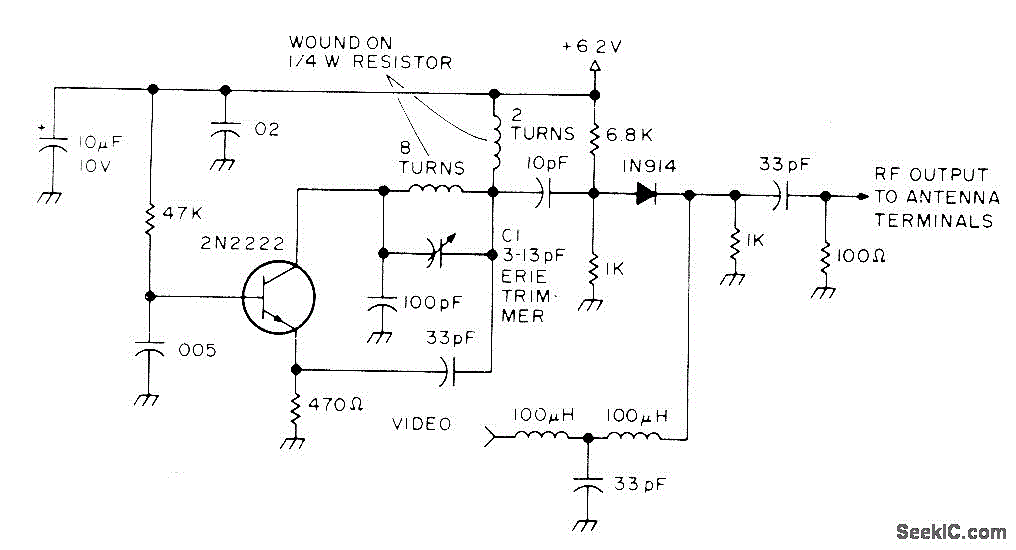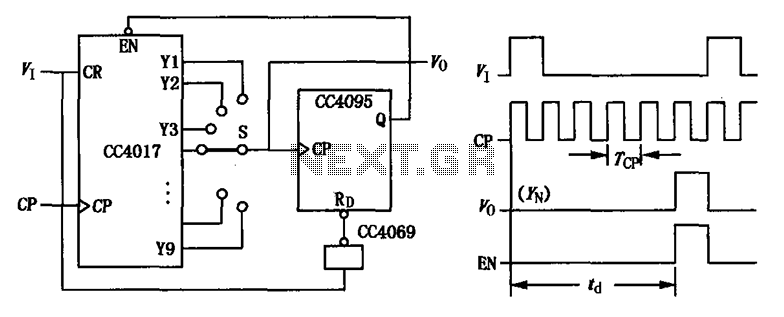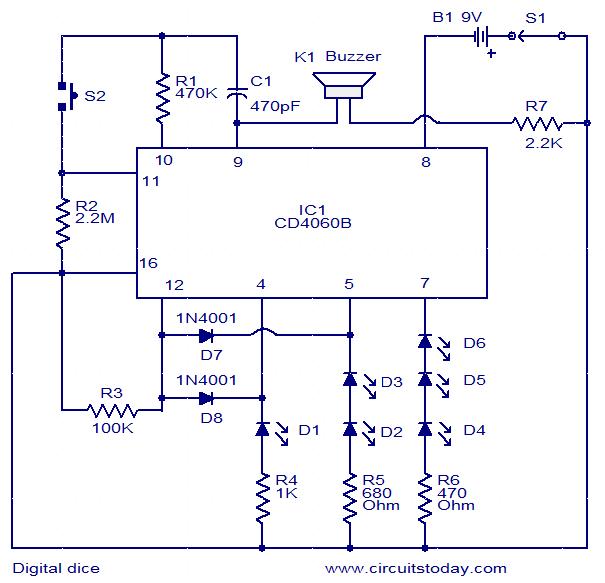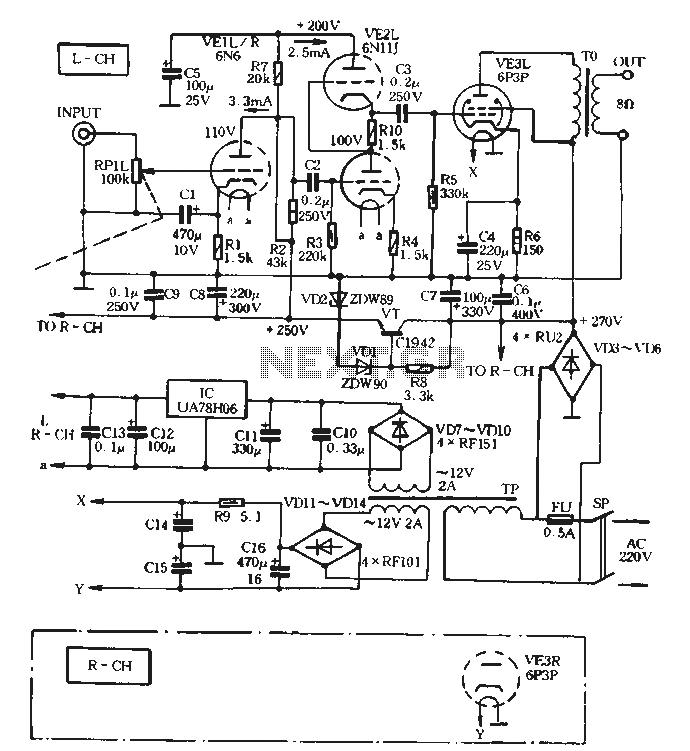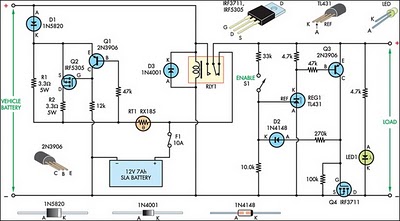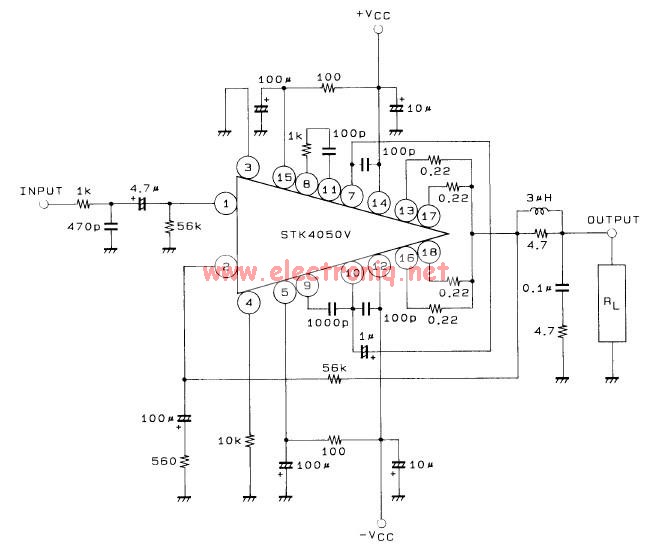
DX Audio Filter Circuit
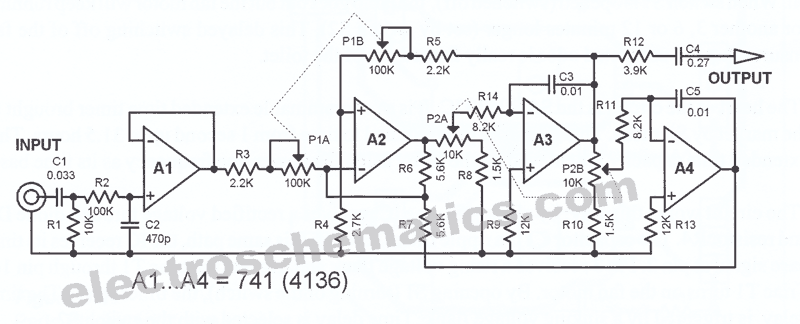
Most universal radio receivers have a very wide bandwidth that is not particularly suitable for radio amateurs. The better models with narrower bandwidth are almost a...
Universal radio receivers are designed to operate over a broad frequency range, making them versatile for various applications. However, for radio amateurs, the wide bandwidth may not provide the necessary selectivity required for effective communication. Models that feature narrower bandwidths are often preferred as they can filter out unwanted signals and reduce interference, allowing for clearer reception of specific frequencies.
In a typical schematic of a universal radio receiver, several key components are involved in achieving this functionality. The front end of the receiver usually consists of an antenna, which captures radio waves, and a radio frequency (RF) amplifier that boosts the signal strength. Following the RF amplifier, a bandpass filter is employed to select the desired frequency range, effectively narrowing the bandwidth. This filter can be implemented using passive components such as capacitors and inductors or active components like operational amplifiers.
Next, the signal is fed into a mixer stage where it is combined with a local oscillator signal. This process shifts the frequency of the incoming signal to an intermediate frequency (IF), which is easier to process. The IF stage typically includes additional amplification and filtering to further enhance the signal quality.
After the IF stage, the demodulation process occurs, where the audio or data signal is extracted from the modulated carrier wave. This can be accomplished using various demodulation techniques, depending on the modulation type (AM, FM, SSB, etc.). Finally, the output stage includes audio amplifiers and speakers or headphones, allowing the user to hear the received signals.
In summary, while universal radio receivers offer broad frequency coverage, models with narrower bandwidths are often more suitable for radio amateurs, providing improved selectivity and signal clarity through a well-designed electronic schematic that includes key components such as RF amplifiers, bandpass filters, mixers, and demodulators.Most universal radio receivers have a very wide bandwidth that is not particulary for radio amateurs. The better models with narrower bandwith are almost a.. 🔗 External reference
Universal radio receivers are designed to operate over a broad frequency range, making them versatile for various applications. However, for radio amateurs, the wide bandwidth may not provide the necessary selectivity required for effective communication. Models that feature narrower bandwidths are often preferred as they can filter out unwanted signals and reduce interference, allowing for clearer reception of specific frequencies.
In a typical schematic of a universal radio receiver, several key components are involved in achieving this functionality. The front end of the receiver usually consists of an antenna, which captures radio waves, and a radio frequency (RF) amplifier that boosts the signal strength. Following the RF amplifier, a bandpass filter is employed to select the desired frequency range, effectively narrowing the bandwidth. This filter can be implemented using passive components such as capacitors and inductors or active components like operational amplifiers.
Next, the signal is fed into a mixer stage where it is combined with a local oscillator signal. This process shifts the frequency of the incoming signal to an intermediate frequency (IF), which is easier to process. The IF stage typically includes additional amplification and filtering to further enhance the signal quality.
After the IF stage, the demodulation process occurs, where the audio or data signal is extracted from the modulated carrier wave. This can be accomplished using various demodulation techniques, depending on the modulation type (AM, FM, SSB, etc.). Finally, the output stage includes audio amplifiers and speakers or headphones, allowing the user to hear the received signals.
In summary, while universal radio receivers offer broad frequency coverage, models with narrower bandwidths are often more suitable for radio amateurs, providing improved selectivity and signal clarity through a well-designed electronic schematic that includes key components such as RF amplifiers, bandpass filters, mixers, and demodulators.Most universal radio receivers have a very wide bandwidth that is not particulary for radio amateurs. The better models with narrower bandwith are almost a.. 🔗 External reference
